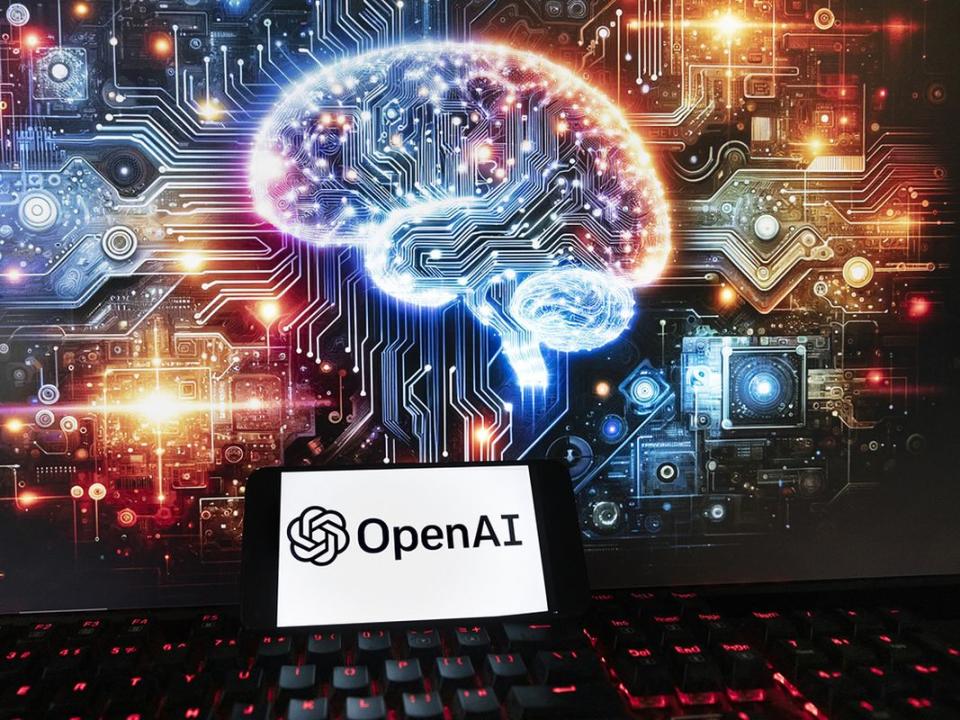AI demands are straining corporate electricity bills

By Rosalind Stefanac
Despite all the benefits of artificial intelligence in improving business operations and productivity, the energy-intensive applications it drives are taxing power grids and threatening to slow the transition to cleaner energy sources.
AI will account for one-fifth of the 160 per cent increase in data centre power demand by 2030 in the United States, according to a 2024 report by Goldman Sachs Group Inc. called Generational growth, AI data centers and the coming U.S. power demand surge.
Researchers from the New York-based investment firm said an average ChatGPT query requires six to 10 times the electricity of a Google search. Added to that is the expected doubling in carbon-dioxide emissions associated with data centres by 2030, and that renewable sources — such as solar, wind and battery technologies — aren’t expected to be able to scale up to meet energy demands anytime soon.
“It is a fact that large language models like GenAI do take up energy and that leads to carbon emissions and everything that comes with that,” Krish Banerjee, managing director and lead for data and AI at Accenture Canada, said. “However, it’s important to also recognize that there are ways and approaches we can adopt in terms of how we mitigate that.”
No one size fits all
In addition to developing alternative and more sustainable sources of energy to tackle the impending AI demand, Banerjee said businesses have to be strategic in deciding which problems really need to be fixed with large-language, energy-intensive models.
“If you have to solve every single problem with the largest hammer, then you’re probably not leveraging the tools effectively,” he said.
Companies inevitably turn to applications that require the highest energy consumption and have the highest carbon emissions — even when it’s unnecessary — when they don’t know how to route queries to the appropriate problem-solving tools, he said.
Banerjee expects AI will also play a key role in helping find longer-term solutions to current power source dilemmas.
“How do we use AI to better understand what energy sources we should be using?” he said. “It’s about putting AI to work for the benefit of the cause.”
For all the “game-changing solutions” that AI will help businesses achieve in the future, corporations can’t ignore the sustainability issues heating up today, Jas Jaaj, managing partner AI and Data at Deloitte Canada, said. He advises all organizations looking to build or modernize their data centres to be thoughtful in choosing their suppliers.
“Everyone needs to have robust measurement monitoring and reporting mechanisms when it comes to (carbon) emissions,” he said.
In putting in disciplines and striving to meet global 2030 sustainability commitments, he said companies need to challenge themselves, their suppliers and “all the players in the ecosystem they work with … to step up their game in terms of using renewable energy sources and then providing innovative solutions.”
Jaaj expects a more decentralized approach to data centres going forward as companies seek to be less dependent on external sources to fuel their AI solutions, particularly for mission-critical processes.
“There will be this move in some cases where companies will want to own their own infrastructure in their own data centres to be able to be more resilient,” he said.
Companies such as Nvidia Corp., which engineers systems and software to help data centres manage the computing demands of AI, are helping corporations create their own data centre solutions, Jaaj said.

“Their growth is a signal of how the world is shifting,” he said.
In the meantime, sustainable solutions for powering AI-driven data centres may be a lot closer than anticipated. For example, Miami-based startup Exowatt, partly backed by OpenAi OpCo LLC cofounder Sam Altman, has a self-contained solar thermal and power product set to commercially deploy later this year.
The company’s P3 system is designed to fit into the space of a standard 40-foot shipping container and will combine a solar heat collector, a heat battery and a heat engine capable of providing dispatchable power and heat.
“The beauty of it is that regardless of the project size, whether a small megawatt or a big gigawatt (data centre), we can linearly scale the number of modules we deploy to that project,” said chief and co-founder Hannan Parvizian, noting there is already “a huge backlog” of interested customers and projects to take online.
He has heard from companies developing data centre projects that have purchased everything from the real estate to the necessary computing power only to realize there is no capacity for them to connect to the grid.
“There needs to be additional capacity built and we can’t wait another 10 years for a new hydro plant or geothermal installation to go online,” he said.
TD is using AI to speed up mortgage applications and code development
Generative AI is taking over customer service and it's working
Because the P3 stores energy as heat and not electricity, costs are minimal compared to current battery architectures. The company’s goal is to deliver renewable energy for commercial, energy-intensive applications such as AI at a cost of one cent U.S. per kilowatt hour.
“I think from a market readiness perspective, customers really want us,” Parvizian said. “The real tragedy would be if data centre customers reverted back to fossil fuels because there is no renewable energy alternative on the market.”
Bookmark our website and support our journalism: Don’t miss the business news you need to know — add financialpost.com to your bookmarks and sign up for our newsletters here.

 Yahoo Finance
Yahoo Finance 